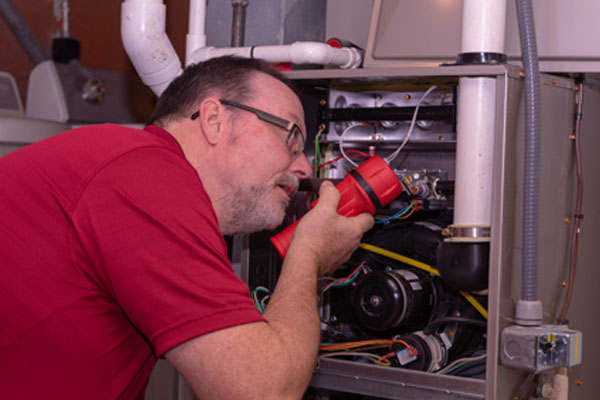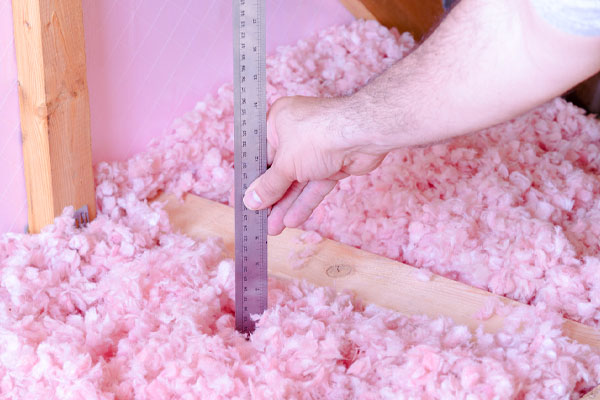Table of Contents
Large furnaces are remarkable machines but are not necessarily the best choice for your home. Powerful systems will perform sub-optimally if installed in an incompatible environment. Therefore, you must consider furnace sizing before your HVAC replacement to match your home’s needs.
Don’t make the mistake of investing in the biggest furnace size you can get your hands on. Multiple factors need to be considered during the furnace selection process. Therefore, it is necessary to ask for professional assistance when conducting this complex task. Hire an experienced HVAC technician to do a scientific analysis to ensure you get a furnace that’s compatible with your home’s needs.
Keep reading to learn more about furnace sizing and its importance.
Why Is Furnace Sizing So Important?

Many people usually get the wrong furnace size. This is because they use questionable criteria to choose their furnaces. Proper guidance is crucial; otherwise, they will undershoot or overshoot the mark and suffer from the adverse effects of their inexperience. This may cause financial and physical burdens on your family instead of helping them. Remember that even a tiny gap may cause irritation.
Getting the right furnace size at the start means you will enjoy stress-free ownership for a long time. This article explores the disadvantages of having a wrong-sized furnace and valuable tips on how to choose the correct furnace sizing for your home.
What’s Wrong with Oversized or Undersized Furnaces?
Here are the affected areas when you have an undersized or oversized furnace:
Lack Of Comfort

A furnace that’s too small won’t have adequate power to warm the entire home. This will be especially obvious during the coldest days of the year. The heating system may be running on full blast, but you’ll still need to wear layers of clothes and hide under thick blankets. It can run the whole day but still fail to reach the set temperature.
An oversized furnace also creates problems. It will warm some rooms faster than others, making the thermostat think the entire house is already warm. This will trigger the furnace to turn off even if other rooms are still cold. You may hear complaints from family members regarding uneven temperatures.
Poor Furnace Efficiency
The energy usage of your furnace varies because it relies on the system’s activity level. For instance, it will consume more energy when it turns on and shuts off, so you may want to minimize these phases. Remember that your furnace is at peak efficiency during the middle phase as it is when it is at a steady state.
Oversized furnaces tend to start up and shut off quickly. This is an issue known as short cycling. It occurs repeatedly, using more energy than a properly sized furnace. Excessively large furnaces never achieve a steady rhythm. On the other hand, an undersized furnace works harder to perform. This results in faster wear and tear. Remember that heating systems account for a large portion of the US households’ energy needs. Wrong sizing causes problems for families and the environment.
High Energy Costs
Consuming more energy translates into higher monthly expenses, regardless of whether your furnace is powered by heating oil, propane, or natural gas. An oversized or undersized furnace makes you spend more on fuel than necessary. This can mean spending thousands of dollars annually. You shell out this much in excess but still do not get the comfort your home deserves as you get uneven heating instead. Don’t pay more for fuel than necessary by ensuring you have the right furnace size. Consult an HVAC professional to determine the right size that best fits your home.
Short HVAC Lifespan

Short cycling doesn’t only negatively impact your home comfort and efficiency. It is also a bane to the lifespan of your furnace and its components. Quick switching on and off causes faster wear and tear of the unit’s parts. A furnace can typically last over two decades, but you may only get ten years or less. Undersized furnaces also experience this issue.
Faster wear and tear means you have to buy another furnace earlier than expected. This means you have to spend thousands of dollars on a new installation. This isn’t a small investment, so it is recommended that you spend your money wisely. Have a professional assess your furnace sizing needs so you can make an informed decision. HVAC technicians have extensive experience that they can use to help you find the ideal furnace size for your home.
How Proper Furnace Size Is Calculated
Here are three ways furnace size is calculated properly:
Load Calculation
Each home has unique heating needs. Many factors impact the load, including floor area, insulation level, orientation, layout, window type, and siding material. A manual load calculation is time-consuming and complicated, so HVAC professionals often utilize advanced software. They input the values in this software to get immediate results.
However, old-fashioned HVAC techs may use simple rules of thumb to get their figures. This usually yields inaccurate results. Ensure you hire licensed HVAC technicians who use modern methods to get the exact numbers you can trust. Do this the next time you need a heating system replacement.
BTUs
Are you unsure about replacing your furnace? Do you want to learn more about your options before consulting HVAC pros? To get a quick estimate, you can use these two variables:
- Your home’s square footage
- The heating factor in your area
You only need to multiply these two variables, and you’ll arrive at a rough estimate.
Indoor heating should be a response to the temperature outside. Expect mostly high temperatures throughout the year if you live near the equator. Moving up in latitude means the climate gets colder, so the heating system’s load gets heavier. This is exemplified by California having a heating factor between 30 to 35 BTUs, whereas Minnesota has 50 to 60 BTUs.
Insulation

The regional climate is out of your control, but you can insulate your home. High insulation levels mean that external factors have less influence on the temperature inside your home. Place the insulation of your choice across exterior walls, ceilings, floors, basements, and other vulnerable areas. Seal the window and floor gaps as well. If you insulate your home well, you can get a furnace below the expected load, which will still work well. For example, a 1,000-square-foot structure in Minnesota typically requires a furnace with 60,000 BTU. However, a well-insulated home may reduce the load significantly. It is always best to consult with a professional.
Conclusion
Furnace sizing is all about compatibility. Ensure that the furnace size you purchase matches your home’s needs. Do not just get the biggest heating system you can find. Hire a professional HVAC technician to do advanced load calculations to get accurate figures. This way, you can enjoy a comfortable home, longer system lifespan, efficient energy consumption, and significant energy savings.
Call County Line Fuel For All Your HVAC Requirements

When you choose County Line Fuel as your oil supplier, you can count on accurate and prompt heating oil deliveries at affordable prices. Our various heating oil delivery plans and financing options allow you to customize your oil deliveries to suit your specific preferences. We take pride in making heating your home hassle-free and cost-effective. Click the link to get started.
Our preferred HVAC service partners have certified and highly trained HVAC technicians who are ready to cater to all your heating and cooling needs. With their expertise and knowledge, they can handle installations, repairs, maintenance, and more. Our superior HVAC solutions are designed to keep your home comfortable all year round without breaking the bank.
At County Line Fuel, customer satisfaction is our priority. We strive to deliver outstanding service and reliable solutions tailored to your unique requirements. For more information, contact us today. Experience the comfort and peace of mind that comes with choosing County Line Fuel as your trusted partner for all your home comfort needs. Call now!
You can click here to contact us now or call us at (908) 735-7610 to find out more!
